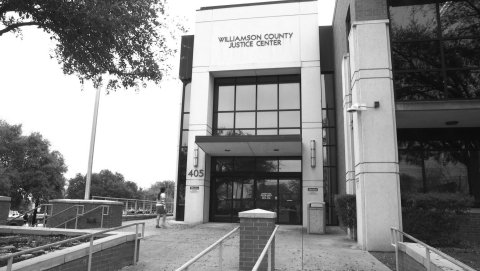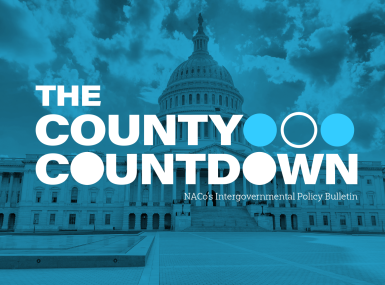Justice system marches on in Texas during COVID-19
Upcoming Events
Related News

The public health emergency caused by COVID-19 has impacted daily life across the country and around the world. In Williamson County, Texas, our justice system responded to the coronavirus through innovation, ingenuity and a commitment to service.
Our courts in Williamson County have long embraced technology, but the disaster declaration accelerated the pace of innovation. On March 13, the Texas Supreme Court and Court of Criminal Appeals ordered all hearings be held remotely.
Under the leadership of local Administrative Judges Betsy Lambeth of the 425th District Court and John McMaster, County Court-at-Law Four, emergency plans ensuring that the justice system continued to function during the pandemic were activated.
The first step was to identify critical functions, including child protection hearings, temporary restraining orders and protective orders. Probable cause hearings (magistration) that must occur within 24-48 hours from the time of arrest were also identified as critical.
If a probable cause is found, the magistrate determines whether to set a personal bond and orders bond conditions and other statutory conditions. The magistrate also determines if there are any mental health issues and orders an evaluation if necessary, which is conducted by our local mental health authority through telemedicine.
Next, the judges assembled a team to determine how operations could be modified to achieve their goal. Our judges, clerks, court staff, IT personnel, sheriff and juvenile services together adjusted operational plans and assessed technological options to ensure essential functions continued, and the public had access to justice.
Our IT Department provided judges with Microsoft Teams, the very popular Zoom, WebEx and CourtCall as options to hold court proceedings.
Court staff created detailed written procedures for hearing participants. Judges and attorneys provided feedback as this process unfolded.
Court-at-Law Judges Doug Arnold (Three), Brandy Hallford (One), and District Judges Stacey Mathews of the 277th Court and Rick Kennon of the 368th Court continue collaborating on jury trial procedures.
The Office of Court Administration is providing guidance on when these procedures can begin, but that won’t be until after June. The office is also exploring technology options for empaneling juries.
The strong collaboration between IT and the courts means that participants in hearings could be almost anywhere — including jails and juvenile detention facilities. Through technology, the district attorney’s office and law enforcement officers can appear remotely, and the judge can electronically sign search and arrest warrants.
Staffs from the sheriff’s office and juvenile services identified spaces in secure facilities where technology could be established to allow in-custody adult and juvenile defendants the ability to participate in hearings.
Many of the in-custody jail call procedures were developed at the direction of 26th District Court Judge Donna King, who ensured individuals in custody had the opportunity to resolve their cases.
All the innovation and ingenuity culminated in the first virtual hearing on March 24. On March 26, felony jail call dockets (a court procedure for scheduling hearings, trials and related matters) along with magistration hearings (held seven days per week) started.
Despite the ongoing pandemic, justice continues to be served through a human/technology evolution.

Attachments
Related News

U.S. Senate reintroduces bipartisan disaster mitigation bill to support homeowners
On January 30, a bipartisan group of senators reintroduced the Disaster Mitigation and Tax Parity Act of 2025, a bill aimed at eliminating federal taxation of state-provided residential mitigation grants. NACo previously supported this legislation and continues to advocate for its passage to support county resilience efforts.

Crash sets big stage for well-honed county mutual aid response effort
Local counties responded with practiced coordination to the deadly collision between an airplane and helicopter, offering help for search and rescue, recovery and support operations.

County Countdown – February 11, 2025
Every other week, NACo's County Countdown reviews top federal policy advocacy items with an eye towards counties and the intergovernmental partnership. This week features a first 100 days update, testimony on rural road safety and more.